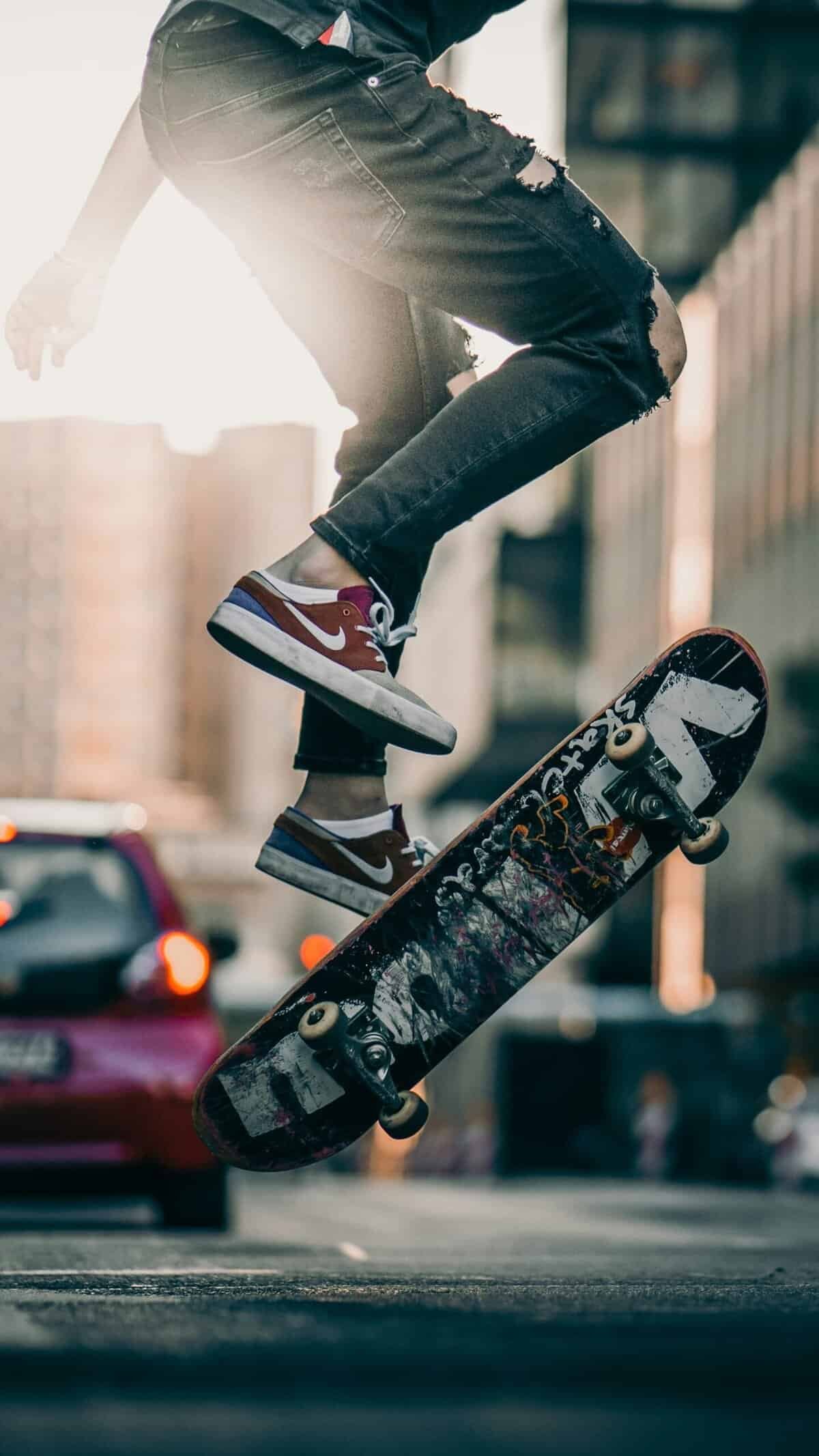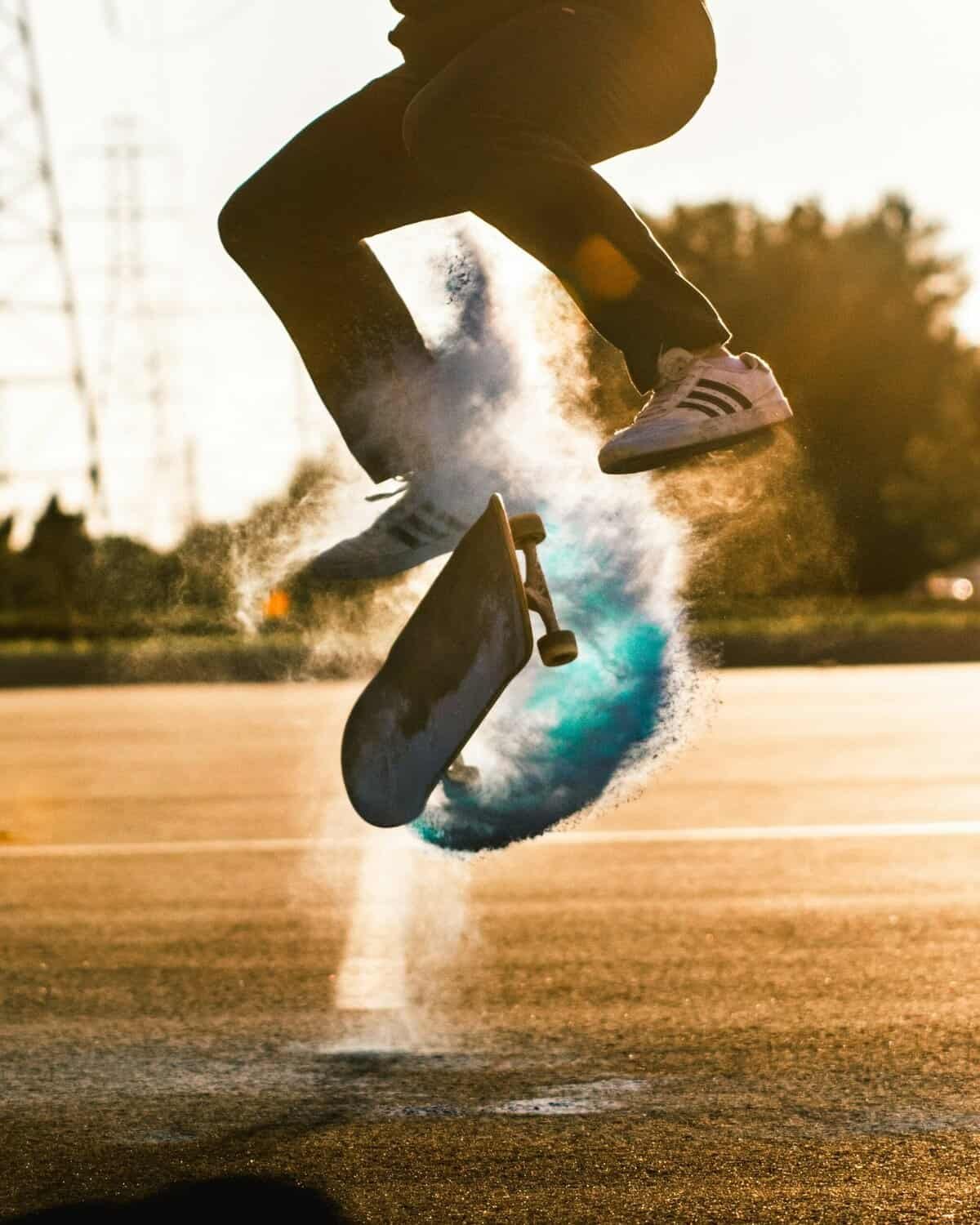Have you ever watched a skater seamlessly ollie up a curb and thought, “How do they make it look so effortless?” You’re not alone in thinking this! Learning to ollie up a curb on your skateboard is a rite of passage in the skateboarding community. It’s like a gateway trick that opens the door to countless other skate tricks. Whether you’re warming up for a day at the skatepark or just trying to avoid a sidewalk obstacle, mastering the curb ollie is essential. But don’t worry—though it may look intricate, breaking it down step by step can make it much more manageable.
Understanding the Basics of the Ollie
Before you launch into curbs, the first step is to become comfortable with the ollie on flat ground. The ollie is the foundation of most skate tricks and involves using the tail of your skateboard to pop the board into the air. This move will enable you to jump over obstacles without having to manual or step off your board.
What Is an Ollie?
An ollie is essentially a jump with your skateboard, where the board miraculously sticks to your feet mid-air despite not being attached. What makes it work is a combination of popping the board’s tail, sliding your foot to level out the deck, and timing it all perfectly to land back on four wheels.
Mastering the Flat Ground Ollie
Start by practicing your flat ground ollie until it becomes second nature. Here are the steps you should follow:
- Foot Placement: Place your back foot on the tail of the skateboard and your front foot roughly in the center, angled slightly forward for more control.
- Popping the Tail: Push down hard on the tail with your back foot. This will give you the lift-off needed to elevate the skateboard.
- Sliding the Front Foot: Simultaneously, drag your front foot up the board to give it upward motion, leveling it out in the air.
- Catch and Land: As gravity pulls you back down, strongly set both feet on the bolts to ensure a smooth landing.
Practice Makes Perfect
Spend ample time honing your flat-ground ollie. You want to be comfortable enough with the motion where you can do it almost instinctively. Once you’re there, it becomes much easier to apply this skill to riding and uneven terrain like curbs.
Maneuvering Up the Curb
Once you’ve got your ollie nailed down on flat ground, it’s time to introduce some obstacles into the mix. Curb ollies are a bit more complex because they require timing and motion adjustment while moving.
Approaching the Curb
It’s crucial to approach the curb at a manageable speed. Too fast, and you’ll find it difficult to time the ollie correctly; too slow, and you won’t have the momentum to carry yourself up.
- Speed Control: Find a moderate speed; imagine riding at a jogging pace.
- Approach Angle: Align your skate path perpendicular to the curb to get the most elevation.
Executing the Curb Ollie
Here’s the play-by-play for ollieing up a curb:
- Ride Steadily: Maintain a straight path as you roll toward the curb.
- Setup and Pop: About half a skateboard-length away from the curb, set up for your ollie. Bend your knees slightly for an additional spring and pop the board’s tail violently.
- Foot Slide and Level: As you pop, slide your front foot up as before, but also aim to pull your feet slightly higher than usual. This extra lift compensates for the increased height needed to clear the curb.
- Timing and Commitment: Timing is crucial. As the nose of your board reaches curb height, level the skateboard and prepare to land.
- Landing: Commit to the landing by bending your knees to absorb the impact and maintain balance.
Common Mistakes to Avoid
Even seasoned skaters have off days, but recognizing common pitfalls can ease the learning curve:
- Bailing Too Early: Stay committed. Quitting halfway through your attempt can lead to injury.
- Speed Overcompensation: Make sure to keep your approach speed consistent to avoid unexpectedly fast landings.
- Poor Timing: Practicing your timing can be a game-changer, so don’t rush your attempts.

Preparing for Different Surfaces
Not all curbs are created equal. Some are higher, some more rugged, and some downright tricky. Preparing to handle different curb faces can build your confidence and prepare you for almost anything.
Handling Varying Heights
Newer skaters should start with lower curbs, typically 3 to 5 inches high. As you become more comfortable, gradually work up to higher ones.
- Lower Curbs: These require less forceful ollies, making them great for practice.
- Higher Curbs: Often require a faster approach and a more dynamic pop to clear.
Adapting to Uneven and Textured Curbs
Curbs aren’t always smooth; some have cracks, beveled edges, or rough surfaces that can affect your ollie.
- Rough Textures: These need a more pronounced foot slide to ensure that the board remains attached to your feet.
- Cracked Surfaces: Watch out for changes in height mid-ollie, which can make landing unpredictable.
Building Confidence and Skill
Skating is as much about mindset as it is technique. Developing confidence and patience can dramatically improve how quickly you master the curb ollie.
Finding Your Mental Edge
Fear and doubt are normal, especially when trying something new. Channel these feelings into focus and physical preparedness.
- Visualization: Picture yourself nailing the trick before you attempt it. This mental practice can reduce anxiety and increase your chances of success.
- Positive Mindset: Celebrate small wins. Clearing a curb, no matter how modest, is worth popping some imaginary confetti.
Perseverance and Patience
Patience is indeed a virtue in skateboarding. Not every attempt will be perfect, but every attempt is a step closer to mastery.
- Take Breaks: If frustration sets in, take a break. Sometimes, returning with a fresh mind can provide newfound clarity.
- Regular Practice: Regular, consistent practice is essential in skateboarding. Set aside dedicated time each week to focus on your skills.

Tips and Tricks for Versatile Ollies
Even seasoned skaters can benefit from tips and expert guidance. Here are some advanced tips to enhance your ollie technique and versatility.
Focus on Core Strength
A strong core can improve balance and provide the necessary muscle engagement for higher, cleaner ollies.
- Exercises: Incorporate planks, Russian twists, and leg raises in your fitness regime.
- Benefits: Stronger muscles contribute to more controlled movements and quicker recovery from mistakes.
Experiment with Different Stances
While regular stance might be your go-to, experimenting with your stance can add a new level of difficulty and mastery.
- Switch Stance: Try practicing your ollies in a switch stance; this can improve your ability to adapt mid-move.
- Nollies and Fakies: Once you’ve mastered curb ollies, mix in nollies and fakies to build versatility.
Accounting for Safety
Any physical activity has its risks, and skateboarding is no exception. Prioritizing safety should always be at the forefront of any skating session.
Essential Safety Gear
Ensuring you have the proper gear can prevent injuries and make skating more enjoyable.
- Helmet: Always wear a helmet. It’s non-negotiable and protects you from serious head injuries.
- Pads: Wrist guards, elbow pads, and knee pads provide extra layers of protection against falls.
Picking Safe Environments
Your choice of practice environment affects both safety and learning quality.
- Low-Traffic Areas: Skating in low-traffic zones reduces the risk of collisions and offers a better focus.
- Well-Maintained Surfaces: Practicing on a smooth, even surface reduces the variability and potential hazards as you learn.

The Journey of Becoming a Skilled Skateboarder
Learning how to ollie up a curb on a skateboard is just a beginning. The journey of skateboarding is filled with thrilling challenges, rewarding successes, and constant growth. Every new skill opens the door to another, and as you become proficient at these basic tricks, more complex maneuvers will become attainable.
Your skateboard is more than just a tool—it’s an extension of your creativity and determination. From the day you first stepped on a skateboard to the moment you effortlessly chemistrates up a curb, each step of your journey builds your personal narrative in the world of skateboarding.
Celebrate Every Milestone
Sometimes we forget to celebrate the small victories, but each one counts toward building your skills and confidence. Whether it’s ollieing up a curb for the first time or perfecting that switch stance, every bit of progress is an achievement.
Community and Continuous Learning
Skateboarding is more than individual discovery; it’s about community, learning from one another, and sharing experiences. As you grow, you might find yourself inspiring others to take on skateboarding journeys of their own. Engage with other skaters, share your insights, and continue to expand your ever-growing skillset.
Remember, every skater was once where you are now, staring at that intimidating curb, wondering how to conquer it. Just like them, with dedication, perseverance, and the right mindset, you’ll not only master the curb ollie but go far beyond, paving your own path in the skating world.
